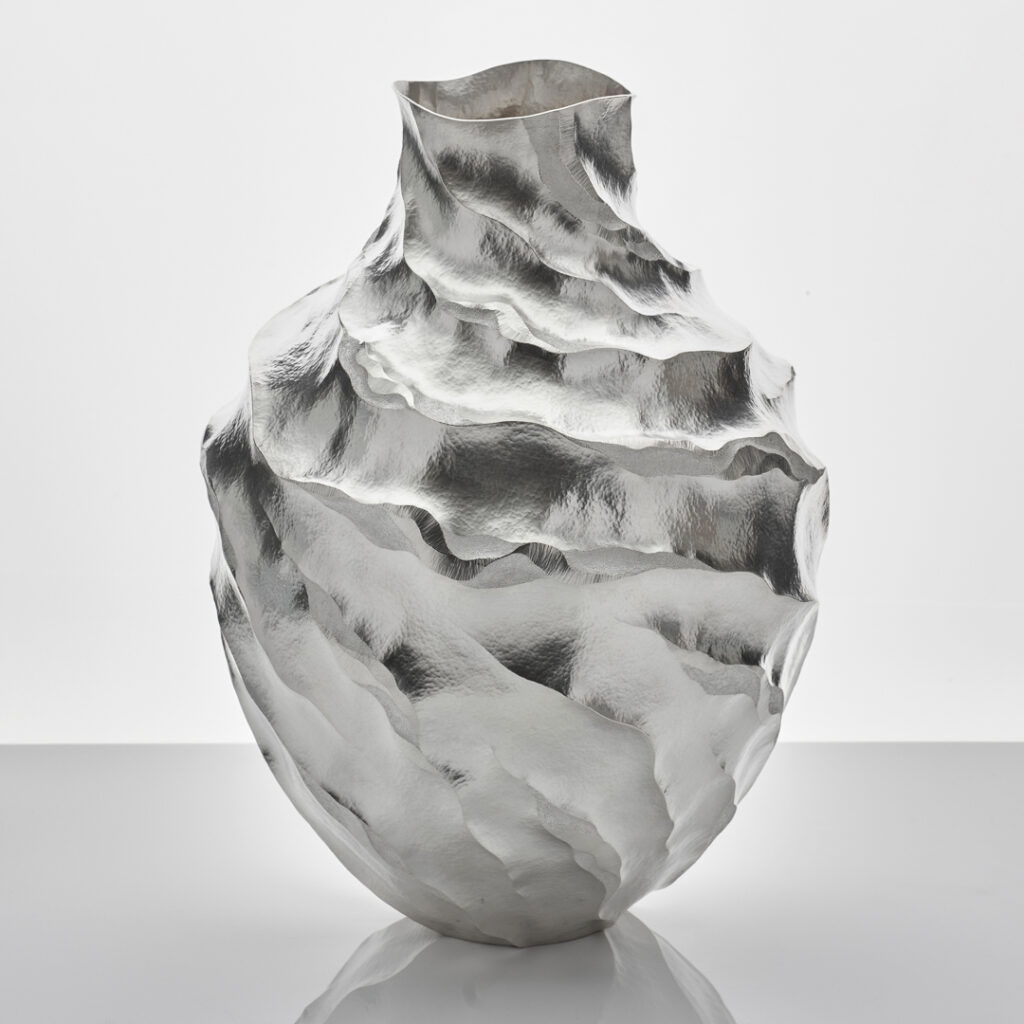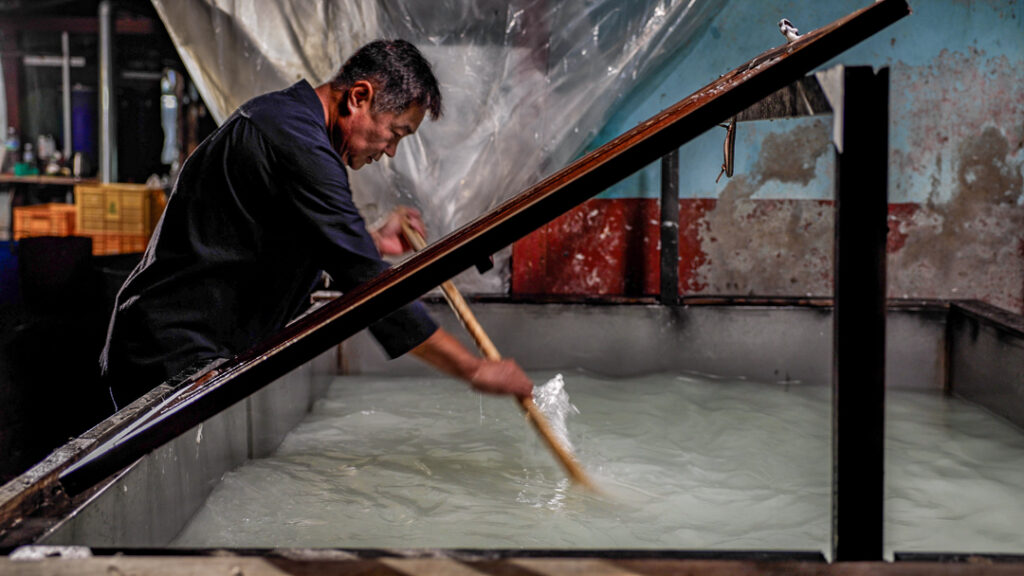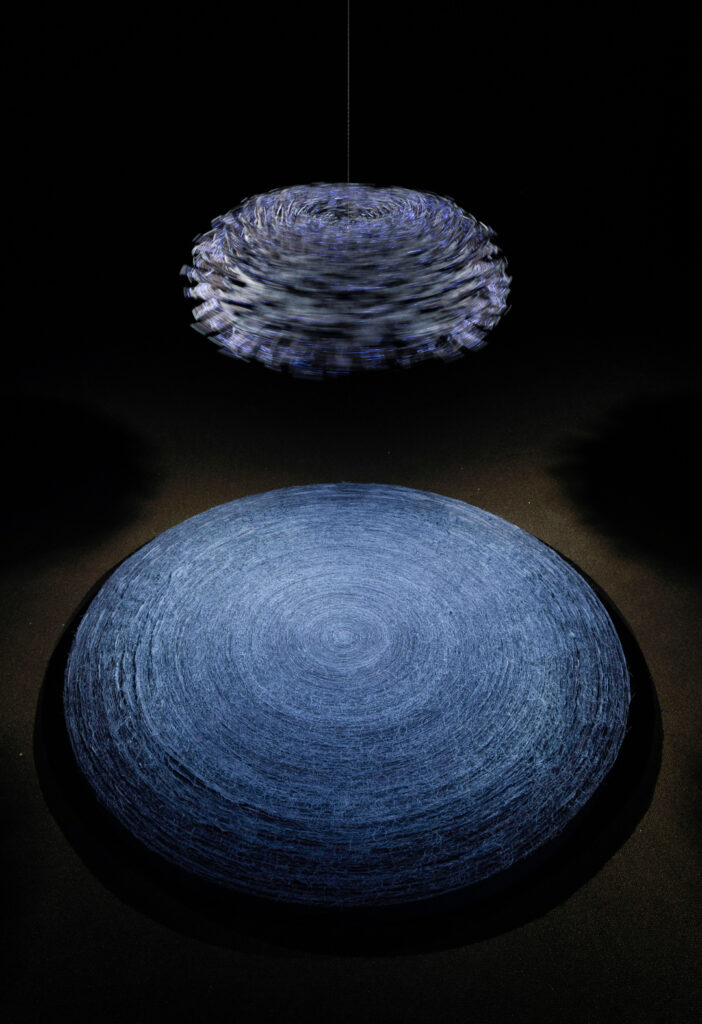Artistic Director, KANG Jaeyoung, explicates the concept of “objet” that frames the extraordinary works of the Cheongju Craft Biennale.
Scent is one of the key elements (much like the invisible air) that have sustained crafts. Interpretation of crafts that have thus far been based on its visual-usage-touch will be expanded into the invisible territory, and the essence of aesthetics that leads to self-reflection through experience will be revisited.
The 2023 Cheongju Craft Biennale in Cheongju, the home of Jikji, will diffuse a clean and lingering fragrance of contemporary craft art.
The Geography of Objets
Living in the net of biophilia
Crafts are the result of the direct and physical connection between men and nature over millennia that shows the history of coevolution. Craftsmen maintain an intimate relationship with the human body and nature, constantly reaffirming these connections through their work. Craft possesses a remarkable ability to embody and bring to life the essence of civilization. Just as musical notes on scores transform into music and blueprints manifest into soaring architecture, crafts allow the esoteric and abstract virtual worlds for the inflow of blood and senses and ultimately return back to the physicality of civilization.
This biennale delves deeper into the unique power of craft, the diverse objets created through the coevolution of humans and nature, and the intricate relationships between them. Craft should no longer be confined to being a mere tool for humans. From stone axes to AIs, the craft of this era must be reconsidered at a much broader and elevated level of Objet, encompassing humanity, nature, and the world.
This is because <The Geography of Objets>, which humans have been creating with nature for millennia, represents the oldest form of “intelligent design” and serves as the “history of civilization.” Consequently, we can gauge the present and future of craft, as well as the future of humanity that will be shaped by craft through these “Objets.”
The theme of this biennale, <The Geography of Objets>, invites us to perceive craft from an expanded perspective of “big history” and the “big question” of where objets originate, the relationships they foster, and their destination.
This biennale redefines the grounds for aesthetics, technology, cultural context, images, and narratives surrounding the contemporary craft ecosystem. I hope that <The Geography of Objets – Living in the Net of Biophilia>, presented by over 100 creators from 18 countries gathered in Cheongju in 2023, will serve as a map for a new civilization that reflects on this era through craft, imagine the future, and seeks practical actions in everyday life.
#1. Objets Breathing in Harmony with the Earth
Biophilia, beyond humanism
Could craft have inadvertently strengthened anthropocentrism and contributed to the overexploitation of natural resources? The crises humanity faces due to climate change and the resulting pandemic demand a profound reflection on human civilization. Similarly, crafts, which have been creating various objets for humans, are also subject to scrutiny. We propose a new craft/ethos of this era, rooted in a globally expanded biophilia. It sheds light on how the pure form of craft, blending natural materials and age-old craftsmanship, emerges before us with its life.
- 김명진_KIM Myungjin (South Korea) Installation
- TAKAHASHI Haruki (Japan)
#2. Cultural Genes and Contexts That Connect Humans, Nature, and Objets
Meme & Cultural Contexts
What is the new creativity and value of craft that harmonizes nature, labor, and artistic production? Today’s craftspeople deeply cherish the cultural heritage and natural imprints embedded in their genes from their ancestors. The diverse cultural genes found in their works constantly revive the past and perpetually generate the present. Each family lineage, region, and civilization possesses its unique materials and techniques. We delve into the past, present, and future of craft, bridging tradition and contemporary while linking generations, exploring the role and expansiveness of crafts for this era.
- 덩웬젠_DENG Wen-jen (Taiwan), Atayal Migration Map, 2021. Gunnybag, Indigo Dyeing, Embroidery. W.131 x H.161cm ⓒ Deng Wen jen
- 김윤관_ KIM Yoonkwan (South Korea), Sambangtakja_SANG, 2019~2023. Wood. Installation Cut ⓒ KIM Yoonkwan
#3. Hand, Tool, Machine, and Digital: Hybrid Production Methods and Technologies
Hybrid & New Craftsmanship
In the era when we must coexist with mechanical organisms like AIs and the Internet of Things, how should craftspeople and creators view or change their production techniques and attitudes? Modern material civilization, characterized by uniform mass production and the convenience of disposable products with the invention of plastic, along with the influence of digital civilization, automation, and AI, pose both threats and opportunities for the realm of craft. This lets us imagine the possibility of a greener world, where human influence and nature are treated more ethically through the freedom to choose materials (natural and artificial) and technologies (machine and hands). This fosters a future for craft that involves human labor, technology, and community. This allows us to present the fine craft converging with the digital elements and the application of new appropriate technologies.
- 스즈키 히로시 SUZUKI Hiroshi (South Korea), Aqua-Poesy VII Vase, 2021. W.27.5 x D.27.5 x H.38 cm ⓒ Adrian Sassoon Gallery, Photo by Sylvain Deleu
- 마이클 이든 Michael EDEN (UK), Orange Romanesco Vase I, 2017. Mineral-coated nylon, 3D printing. W.28 x D.26.5 x H.40 cm ⓒ Adrian Sassoon Gallery, Photo by Sylvain Deleu
Jikji: Archival Culture and Craftwork, Alchemists of Civilization in Collaboration with Nature
The craftsmen who created Jikji
South Korea is globally recognized as a country of archives, and the publication of “Jikjisimcheyojeol (直指心體要節)” at Heungdeoksa Temple in Cheongju in 1377, which has been acknowledged as the world’s finest metalloid type. Jikjisimcheyojeol stands as humanity’s first metal printing press, and we can take immense pride in Korea’s role as the creator of this groundbreaking advancement in human civilization.
At the core of this historic archival culture lies the art of craft. A Korean saying, “books make people, and people make books” is akin to the idea that “craft shapes civilization, and civilization shapes people.” However, while historic archives are highly valued and spotlighted, the recognition and treatment of the craftspeople responsible for laying the material foundations for these achievements have been neglected. Therefore, we now summon the skilled artisans responsible for the foundation of archival culture. The craftsmen of Hanjijang (Korean paper making), Piljang (brush making), Mukjang (ink making), and Beoru-jang (inkstone making) produce essential materials like paper, brushes, ink, and inkstones. Additionally, we shed light on the artisans of Gakjajang (calligraphic engraving), Hwaljajang (movable type making), and Baecheopjang (mounting) who carve on wooden boards, craft metal types, and assemble old books by tying, folding, and gluing. Only through the seamless connection and synergy of these various specialized fields had let Jikji come to such achievement. We pay homage to the existence of these craftspeople, who have dedicated their lives to nurturing the splendid flower of Jikji. Their profound influence is the reason we host the craft biennale in Cheongju, Jikji’s hometown, as they hold the essence of Jikji.
- Jikji_임인호_LIM Inho_Geumsok Hwaljajang(Master of Metal Movable Type Making National Intangible Cultural Heritage)
- Jikji_안치용 한지장_AN Chiyong_Hanjijang(Korean Paper Making_National Intangible Cultural Heritage) ⓒ Cheongju Craft Biennale 2023
#4. Artisan’s Practices for Ecological Correctness
Upcycling & ecological correctness
Who are the craftspeople pursuing biophilia and ecological correctness? The creators who fulfill the value of this elevated craft and the ethics of craftspeople are none other than the upcycling artists. Through recycling, upcycling, and upgrading, they breathe new life into waste materials, ensuring that no resources are discarded during product production. Upcycling artists are the new creators of this era, embodying both the biophilia and ecological correctness demanded by today’s craft. Here, we encounter the ethical, social, and local practices of new creators and artisans, which challenge anthropocentric ‘one-sided globalization’ and ‘consumerism.’
- 제이든 무어_ Jaydan MOORE (USA), Array, 2022. Silver-plated platters. W.73.7 x D.2.5 x H.68.6 츠 ⓒ Jaydan More (Photo by David Hunter Hale)
- #4. 아리 바유아지 Ari BAYUAJI (Indonesia)
#5. Sustaining Hopes in the Net of Biophilia
Net of biophilia & the future
How can we sense and experience the craft of biophilia, which embodies an inherent attachment to and return to nature? Craftsmen weave memories through the movements of their hands and hearts, respecting and embracing objets, and narrating the stories of nature and civilization that surround humanity. Craft, born from the collaboration and coexistence of humans and nature, extends as an art and design convergence, manifesting as objets. Drawing inspiration from natural ecology, it shapes a biophilic environment with diverse colors and patterns, revealing the intrinsic qualities of various materials. Through this, we encounter the enduring hopes sustained in the web of biophilic craft, experiencing the essence and extension of craft intertwined with life, nature, and objets.
- 양유완_YANG Yoowan (South Korea)
- 오마_OMA Space_Infinity, 2022. Installation Cut (South Korea)
About KANG Jaeyoung
 KANG Jaeyoung obtained her undergraduate degree in Art Studies from Hongik University and later completed her master’s degree at the same graduate school. She also served as a curator at both Whanki Museum and the Korea Ceramic Foundation in Gyeonggi-do. In 2008 she was co-curator of Nanjing Triennale, China; 2015-2017 Director of Cultural Regeneration Project; and 2020-2021 Artistic Director, Korean Craft Exhibition, Milan.
KANG Jaeyoung obtained her undergraduate degree in Art Studies from Hongik University and later completed her master’s degree at the same graduate school. She also served as a curator at both Whanki Museum and the Korea Ceramic Foundation in Gyeonggi-do. In 2008 she was co-curator of Nanjing Triennale, China; 2015-2017 Director of Cultural Regeneration Project; and 2020-2021 Artistic Director, Korean Craft Exhibition, Milan.













